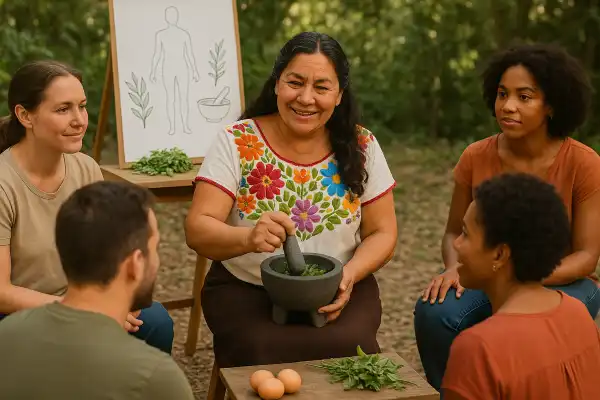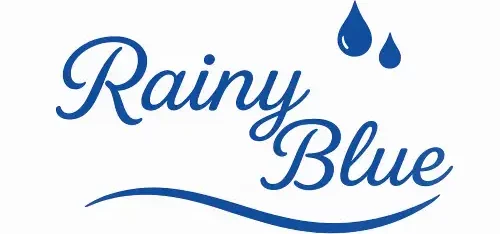Curanderismo training courses represent a bridge between ancient wisdom and modern learning, addressing the growing interest in traditional healing practices among both practitioners and the curious public. Many seekers find themselves drawn to these programs as they recognize the limitations of conventional approaches to wellness and yearn for more holistic, spiritually-grounded healing modalities.
María del Pilar Fernández, drawing from her lineage of curanderas and extensive fieldwork across Mexico, understands the profound responsibility that comes with teaching these sacred arts. Through her work, she seeks to honor the traditional pathways while making curanderismo accessible to contemporary learners who feel called to this healing practice.
Curanderismo training courses
Curanderismo training courses are structured educational programs designed to teach the principles, practices, and cultural context of Hispanic/Latino traditional medicine, though they typically do not provide certification as traditional healers upon completion. These courses serve as foundational learning experiences that introduce students to the rich tapestry of indigenous healing arts rooted in Mexican and Southwestern United States traditions.

Academic and university programs
The University of New Mexico offers the most comprehensive academic approach through a four-course series available on Coursera, covering traditional healing using plants, healing of the body, healing of mind and spirit, and global cultural influences. These courses feature teachings from various aspects including intestinal blockage (empacho), spiritual cleansings (limpias), laugh therapy (risa terapia), shawl alignments (manteadas) and preparation of medicinal teas (tes medicinales).
The university also provides continuing education courses during summer months, offering two-week intensive face-to-face classes that bring together recognized curanderos and herbalists from throughout Mexico, Peru, Guatemala, and Ecuador. These immersive experiences allow students to learn directly from practicing healers and observe traditional ceremonies and healing rituals in authentic settings.
Mentorship and apprenticeship programs
Structured mentorship programs, such as those offered by experienced practitioners like Erika Buenaflor, provide year-long learning experiences with monthly online courses and private community support. These programs typically require prerequisite knowledge and focus on practical application rather than just theoretical understanding.
Traditional apprenticeships remain the most authentic path, involving life-long learning relationships with established curanderos who pass down knowledge through direct mentorship and hands-on experience. Many traditional healers become curanderos after long apprenticeships, though great emphasis is placed on the person’s innate talent for healing, typically referred to as a spiritual calling or “el don” (the gift).
Professional development and continuing education
Healthcare professionals can access continuing education courses that provide cultural competency training in curanderismo practices, helping them understand and support patients who utilize traditional healing methods. These programs bridge conventional medicine with traditional practices, fostering greater understanding and collaboration between different healing approaches.
Course content and learning objectives
Students in curanderismo training courses typically learn about the use of plants for digestive and nervous systems, preparation of tinctures and microdosis, juice therapy, geotherapy (clay combined with plants), herbal oils, and herbal smoke for healing. Body-focused courses cover traditional treatments including empacho (intestinal blockage), manteadas (shawl alignments), ventosas (fire cupping), hidroterapia (healing with water), and huesero (bone setter) techniques.
Advanced courses explore mind, energy, and spirit healing through temazcal (sweat lodge ceremonies), various forms of limpias (spiritual and energetic cleansings), risaterapia (laugh therapy), and creation of sacred healing spaces.
Limitations and expectations
Most formal training programs explicitly state that learners will not become certified traditional healers upon completion, but will gain foundational knowledge to apply basic principles of traditional medicine for health and wellness. This distinction acknowledges the depth and spiritual commitment required for true curandero practice, which extends far beyond academic study.
Traditional curanderismo is not easily adapted to conventional educational models that rely on certificates and degrees, as it represents a life-long commitment and lifestyle rather than a professional skill set. The spiritual calling and personal transformation inherent in this path cannot be replicated through coursework alone.
Choosing the right training path
Prospective students should consider their intentions and level of commitment when selecting curanderismo training. Academic courses provide excellent cultural education and basic practical knowledge, making them suitable for those seeking personal enrichment or cultural understanding. Healthcare professionals may benefit from continuing education programs that enhance their cultural competency.
Those feeling a deeper calling toward healing work might seek mentorship opportunities or apprenticeships with established practitioners. However, such relationships typically develop organically through community connections and demonstrated commitment to the practice and its cultural roots.
The authenticity of training programs varies significantly. Programs taught by indigenous practitioners with documented lineages and community recognition offer the most authentic experience, while commercial programs may lack the cultural depth and spiritual foundation essential to genuine curanderismo practice.
Disclaimer
Please note that Maria is not a physician, psychologist, or nurse. These culture-specific spiritual healing services are not meant to replace medical or psychological diagnosis and treatment. It is recommended that you see a licensed physician or licensed health care professional for any physical or psychological ailment you may have.
Several years ago, María del Pilar encountered Dolores, a middle-aged woman from Puebla who had been struggling with persistent anxiety and insomnia following the loss of her husband. Despite visiting multiple doctors and trying various medications, Dolores found little relief and felt increasingly disconnected from her cultural roots. When she came to María del Pilar, she was desperate but skeptical about traditional remedies.
María del Pilar began with a thorough limpia using sacred copal and hierba buena, carefully observing Dolores’ energy patterns and listening to her story with deep attention. She prepared a gentle tea blend of toronjil and flor de tila, teaching Dolores how to brew it properly while setting intentions for peaceful sleep. Over several sessions, they worked together to create a small altar in Dolores’ home, incorporating elements that honored her late husband while supporting her healing journey.
The transformation occurred gradually but profoundly. As Dolores reconnected with the healing traditions of her ancestors, her anxiety diminished and her sleep improved. More importantly, she rediscovered a sense of spiritual connection and cultural identity that conventional treatments had been unable to address. This experience reinforced María del Pilar’s understanding that curanderismo offers healing that encompasses not just physical symptoms, but the restoration of cultural and spiritual wholeness that modern medicine sometimes overlooks.
